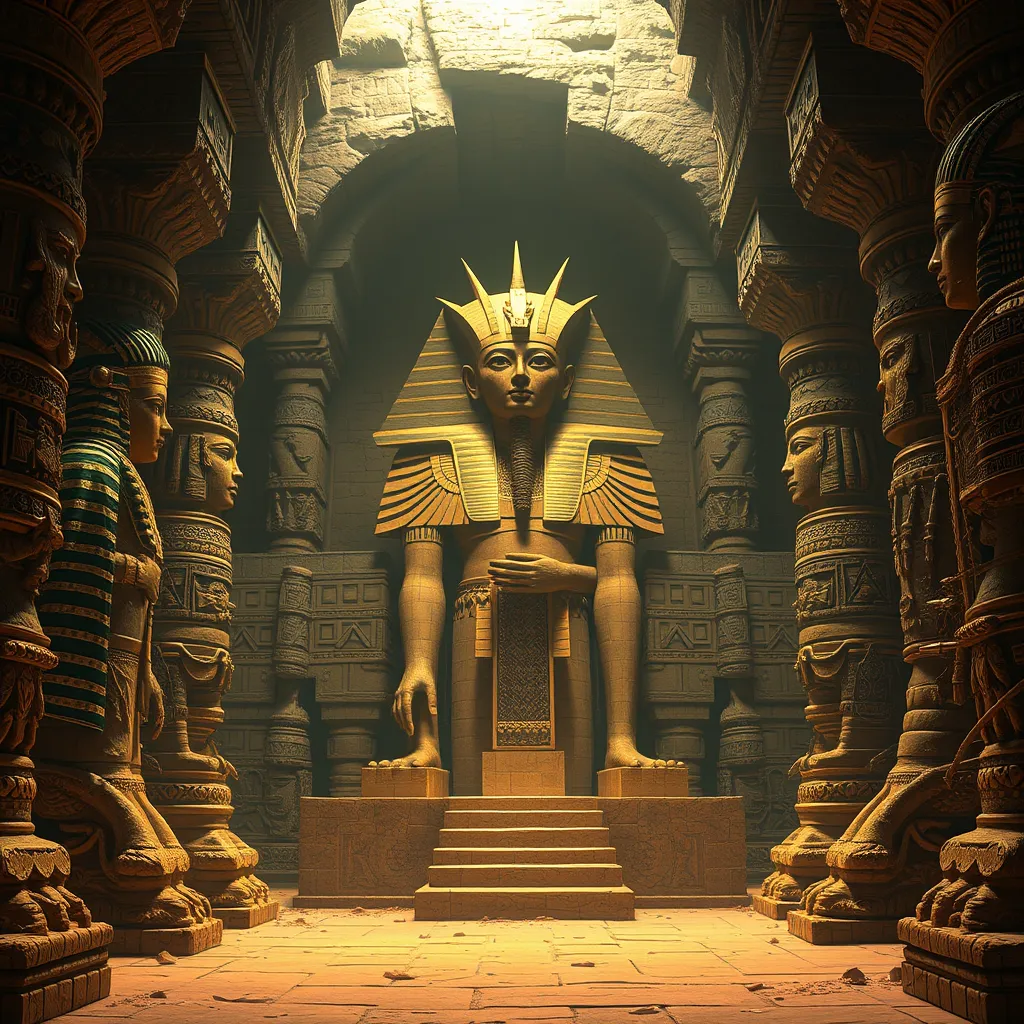The Duat: Exploring the Myths and Legends of the Egyptian Underworld
I. Introduction to the Duat
The Duat, often referred to as the Egyptian underworld, is a pivotal concept in ancient Egyptian belief systems. It is not merely a place of judgment and punishment; rather, it serves as a complex realm where the souls of the deceased navigate through various challenges on their journey after death. The significance of the Duat lies in its embodiment of the ancient Egyptians’ views on life, death, and the afterlife.
This article aims to delve into the various aspects of the Duat, exploring its myths, geography, deities, and the journey souls undertake through this mystical realm. By examining these themes, we can gain insights into the cultural and spiritual values of ancient Egypt.
II. The Concept of the Underworld in Ancient Egypt
The Duat plays a crucial role in Egyptian cosmology, which is built around the cyclical nature of life and death. In ancient Egyptian belief, the afterlife was as important as life itself. The Duat was viewed as a necessary passage for the soul to achieve eternal life.
- Life after Death: The Egyptians believed that after death, the soul would enter the Duat, where it would face various trials and tribulations before attaining a place in the Field of Reeds, a paradise for the worthy.
- Comparison with Other Cultures: Similar to the Greek Hades or the Mesopotamian Underworld, the Duat reflects a universal theme in human culture: the journey of the soul after death. However, the Egyptian view emphasizes rebirth and resurrection, particularly through the myth of Osiris.
III. Geography of the Duat
The landscape of the Duat is as varied as it is symbolic. It is often depicted as a dark, labyrinthine realm filled with rivers, fields, mountains, and various obstacles that the soul must navigate.
Regions of the Duat
- The Lake of Fire: A place of punishment for the wicked, where souls are burned as a consequence of their misdeeds.
- The Field of Reeds: A paradise where the souls of the righteous dwell, representing a perfect reflection of their earthly lives.
- The Hall of Two Truths: A significant location where the “Weighing of the Heart” ceremony takes place, determining the fate of the deceased.
Each region of the Duat has its own symbolism, reflecting the moral and ethical beliefs of ancient Egyptians. The contrasts between punishment and reward are central to the understanding of their afterlife beliefs.
IV. Deities and Entities of the Duat
The Duat is inhabited by numerous gods and goddesses, each playing critical roles in the administration of the afterlife. Two of the most prominent deities associated with the Duat are:
- Osiris: The god of the afterlife, resurrection, and regeneration, Osiris is often depicted as a mummified king. He presides over the judgment of souls and represents the cycle of death and rebirth.
- Anubis: The jackal-headed god, Anubis is the guardian of the underworld. He oversees the mummification process and guides souls through the Duat, ensuring they are prepared for the judgment they will face.
These deities not only guide the souls of the deceased but also administer justice, determining who is worthy of eternal life and who must face punishment.
V. The Journey Through the Duat
The journey through the Duat is fraught with challenges. Upon death, the soul embarks on a perilous journey through various trials that test its worthiness.
One of the most significant moments in this journey is the “Weighing of the Heart” ceremony. During this ceremony:
- The heart of the deceased is weighed against the feather of Ma’at, symbolizing truth and justice.
- If the heart is lighter than the feather, the soul is deemed worthy and allowed to enter the Field of Reeds.
- If the heart is heavier, the soul faces annihilation at the jaws of Ammit, a fearsome creature that devours the unworthy.
VI. Myths and Legends Featuring the Duat
Various myths involving the Duat illustrate fundamental themes of life, death, and rebirth in Egyptian culture. One of the most notable stories is that of Osiris:
- The Story of Osiris: Osiris, once a beloved king of Egypt, is betrayed and murdered by his brother Set. His body is dismembered and scattered across Egypt. However, his wife, Isis, gathers the pieces and resurrects him, allowing him to become the ruler of the Duat. This myth underscores themes of resurrection and the promise of life after death.
Such myths reflect the Egyptians’ beliefs about justice, morality, and the hope for an eternal existence beyond the physical realm.
VII. Art and Literature Depicting the Duat
Ancient texts and inscriptions related to the Duat provide rich insights into Egyptian beliefs regarding the afterlife. The “Book of the Dead,” for example, is a crucial text that offers spells and guidelines for navigating the Duat and achieving a favorable judgment.
In addition to texts, artistic representations found in tombs and temples illustrate the Duat’s landscapes and the various deities involved. These artworks served not only as decoration but also as a means to protect and guide the deceased in their journey through the underworld.
VIII. Legacy of the Duat in Modern Culture
The myths and legends surrounding the Duat continue to influence contemporary literature and media. From novels to films, the fascination with Egyptian mythology and the concept of the afterlife remains prevalent. Works such as Rick Riordan’s “The Kane Chronicles” and various adaptations of Egyptian myths showcase the enduring allure of the Duat.
In conclusion, the Duat represents a profound aspect of ancient Egyptian culture, serving as a testament to their beliefs about death, morality, and the afterlife. The myths, deities, and artistic expressions associated with the Duat provide a rich tapestry of understanding that continues to captivate audiences today.




